Midsommar is 2019`s Horror/Drama Movie
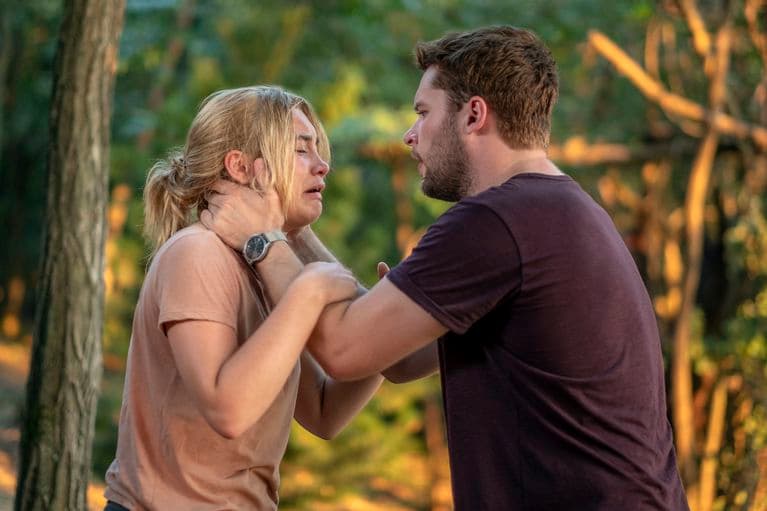
In 2018, Ari Aster shocked audiences with his directorial début, Hereditary. Following Annie, the film is a moody horror film akin to Rosemary’s Baby and Don’t Look Now. While at times explicit and gory, the thematic focus of Hereditary deals with grief and toxic relationships within a deteriorating family through the framework of a cult conspiracy.
Likewise, Midsommar, Aster’s second film, explores an unraveling (and all-but-over) relationship between Dani Ardor and her boyfriend, Christian. The plot deals with grief through the framework of, well, a cult conspiracy.
To say Midsommar is the same as Hereditary is an oversimplification. Hereditary focuses on a deeply troubled and flawed woman who wants to make amends with her son and survive her grief. Aster clues us in—with a standard classroom scene where the characters discuss Greek tragedies—that, in the end, Annie and her remaining family will not heal from their wounds and will not learn from their mistakes.
While this may be fatalistic, the ultimate impression is that the narrative portrays the characters’ issues with the utmost peril and importance. Midsommar captures the dread and desperation of a broken relationship through folk horror, a meticulously crafted fairy tale.
The Beginning
At the start of the film, Dani receives a troubling message from her sister, Terri, which alludes to suicide. She calls Christian, panicked, and Christian attempts to reassure her nothing is wrong, that she should ignore her sister’s “attention-seeking.” He and his friends are not empathetic to Dani’s worries.
It turns out Dani’s fears were justified, as her sister has killed herself and her parents by filling the house with carbon monoxide.
Christian, who has been urged by his friends to break up with Dani because of her using him as an emotional crutch, now feels compelled to stay with her, though he wants to getaway. Reluctantly, he and his friends let Dani, still deeply grieving, come with them to Sweden for thesis research on the Hårga culture, of which one of Christian’s friends, Pelle, comes from.
When some of the friends disobey the Hårga’s rules or openly disrespect certain traditions, gruesome events occur as Dani feels like she belongs with the cult, though she is initially horrified and triggered by both the hallucinatory drugs and seeing the Hårga’s suicide ritual for elderly members.
Dani, Christian, and Symbolism
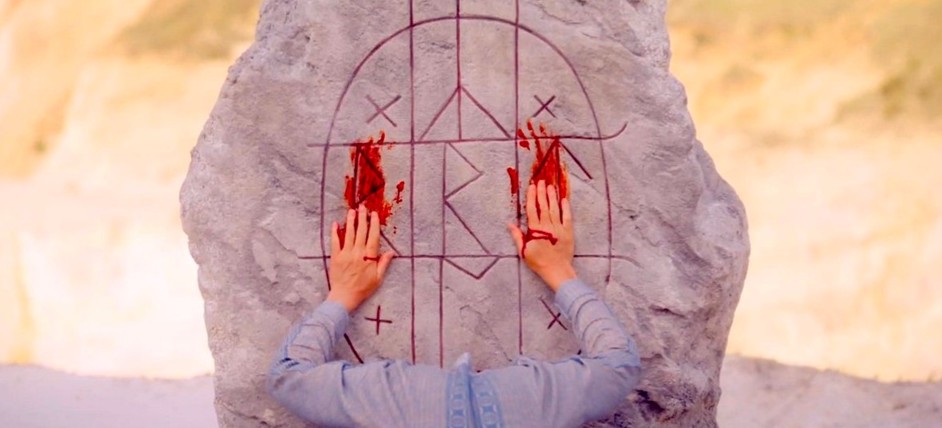
Dani and Christian are together out of obligation. They have been together for four years, so they might as well honor the commitment, even if they are miserable and resentful toward each other. Such a relationship, this together-but-not partnership prolonged beyond a healthy duration, is not uncommon.
Furthermore, the death of Dani’s family magnifies the conflict because, though Christian wants to end the relationship and grows distant to Dani’s efforts at closeness (despite a critique of her that she is sexually distant). Dani needs someone close to understanding her, but Christian is unwilling (and perhaps, with his emotional immaturity, unable) to give that to her. This push and pull drive much of the film.
When looking at the dynamics between Dani and Christian, an intriguing aspect of the film is to look at the construction of their characters. Aster is deliberate in how he names characters and what they wear.
Dani’s name may simply be “Dani” or it may be the French feminized form of “Daniel.” It is worth noting almost all the non-Hårga characters, except Connie, have Biblical names, which further cements them as outsiders in the culture they visit. Some of them, like Josh, regard the culture with a clinical anthropological perspective, while others do not regard the culture with much of anything at all.
When it comes to a Christian perspective, while Aster himself is non-religious, both Hereditary and Midsommar work within the framework of Christian literary conceptions of pagan cults where the people within, despite their outwardly friendly demeanor, are sinister and violent. Where he makes the Hårga more complex is in their capacity to be a safe haven for a traumatized young woman, though just how safe will be analyzed.
Meanwhile, Christian’s name is . . . well, when one is named Christian and in a film with a pagan cult . . . Dani is essentially stuck between the “Christian” world and the Hårga, in which she must make a choice to where she gives her devotion. Christian is not a good partner. He is cowardly and sees Dani’s trauma as a burden; he steals his friend’s thesis after only caring about the Hårga culture for a few days. Meanwhile, the Hårga, especially Pelle, are considerate and giving, leading Dani deeper into their culture.
The identities of Dani’s “lions” are unclear. The Hårga may fit as the lions or enemies for a Christian parable, but they never pose a danger to Dani and in fact are poised as her saviors, her angels, who take her away from her crumbling old life. Christian and his friends, most of them unsympathetic or indifferent toward Dani’s plight, fit the role better, her ascent in the Hårga culture, therefore, being parallel yet reversed from Daniel’s divine assistance.
“Ardor,” Dani’s last name, means passion or “an often restless or transitory warmth of feeling.” It also means “fire,” which, given the ending, is significant as the relationship between Dani and Christian reaches an ultimate cathartic ardor in the final scene. One can argue the death of the relationship was the only way Dani’s inner fire could flourish.
Dani feels strongly, mostly in a negative sense. Grief and helplessness torment her. Before her sister kills herself and their parents, Dani takes Ativan, a medication for anxiety. After the death of her entire family, she only has Christian as comfort, which is poor consolation as he plans to leave for Sweden and grows angry and defensive when she tells him she wished he told her.
Her main conflict deals with ardor in both senses: She must decide between passion (love she clings to) and fire (burning her past, which has caused her trauma). When Christian dies, the failing relationship dies too, which may be seen as free.
She has to choose whether to give keep futilely trying to give life to a dying relationship or to give life to herself, without Christian. Dani’s predicament and turmoil are encapsulated well when Ryan Bradford, on the heels of the Netflix show The Haunting of Hill House and Hereditary, spoke of trauma in his article “Terrifying Family Trauma Is the New Thing in Horror”
Perhaps what we’re witnessing in horror right now is not a commentary on a single anxiety, but a culmination of all the anxieties that exist in culture—the shit that’s built up, affecting generation after generation, especially women . . . who’ve internalized the brunt of trauma for so long and are only now able to channel it. The rage that stems from internalizing trauma (while coddling men).
Bradford also criticizes the end of The Haunting of Hill House for insinuating that, by facing the ghosts, grief, trauma, and mental illness are suddenly healed in the end. The way Midsommar displays and complicated a “happy ending” will be discussed soon.
Despite wanting his presence, Dani continuously tries to appease Christian and not be the “needy” or “clingy” girlfriend. When he forgets her birthday, she blames herself and doesn’t want to bother him. It is as if she puts the failed relationship on her own back until the end. While struggling with anxiety and a stressful family situation before the murder-suicide, she is called the needy, emotional, sexless girlfriend. Meanwhile, she actively worries over bothering him shortly before her sister takes her and their parents’ lives.
Also, when it comes to symbols, the rune on the characters’ wardrobes also hint at the relationship’s fate. No longer in her “normal” clothes, she had on for most of the trip, the runes on Dani’s dress deal with going on a journey (the “R” or Radio) and an awakening (the sideways hourglass, or Dagaz, foreshadowing her changing lens of the world and rebirth). Meanwhile, Christian’s up-arrow symbolizes self-sacrifice. While Christian is indeed sacrificed, he is not at all self-sacrificing, more concerned with his own comfort and satisfaction than reciprocating Dani’s feelings and showing empathy.
Worth noting is the above picture with blood rubbed on the stone with runic symbols. The two symbols covered in blood, the “R” and the up-arrow, represent Dani and Christian, particularly the ruination of their relationship. Dani’s rebirth and freedom must be born from blood-letting and destruction, and from destruction, creation, a cycle as the Hårga speak of.
Let’s Talk About that Ending
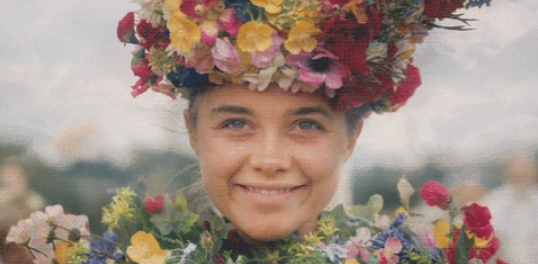
“I think this might be a happy ending,” author Michael Koresky says to Ari Aster in a video. A long pause ensues.
Midsommar complicates the idea of either a downer ending or a cathartic one. Upon a first watch, it may be nice to see Dani prevail and the man who hurt her killed, but Aster problematizes this conclusion. Some have found the ending liberating. It is not surprising, especially for those who have endured abusive relationships, that this may be so. Upon seeing Dani finally happy, the author of this article may have even made a ten-second review of the film consisting only of an image of Lucille Bluth saying, “Good for her.”
Essentially, though, the cult gaslights and manipulates Dani into murdering her boyfriend and all ties to her old life, thus making her dependent on the cult as her new family. She and Christian are drugged, their judgments impaired. Dani is in a vulnerable position. Where else can she go? What else can she do?
Dani has been isolated and desperate to the point of smiling as her boyfriend burns alive in a fire as he wears a disemboweled bear. Not to presume, but this is a unique position. One must wonder how much is the May Queen is truly Dani’s decision while she’s vulnerable and given hallucinatory drugs that affect her already tenuous psyche.
An important aspect of the climax entails Christian’s infidelity. Christian is drugged and confused when he has sex with Maja, a young woman who has been attempting to seduce him throughout the movie. One being drugged precludes informed consent. Therefore, the consensual aspect of the sex is, if one is generous, cast into doubt. Saying the ordeal is rape is not out-of-bounds. No matter how terrible he is to Dani, Christian does not deserve rape. No one does.
From Dani’s perspective, her boyfriend has willingly cheated on her, and therefore he deserves to die, but Christian, despite all his flaws, was coerced into the sex act. He is not an outwardly despicable man who means harm to Dani, which makes his past behavior insidious; toxic partners are not always as obvious in their problematic behavior and often compel their partners to stay because they have good moments, too.
However, since Christian was raped, him being burned alive for infidelity is an extremely dark turn that sours any satisfaction from a comeuppance. He is not a good person or a great person, sure. He is immature and selfish, but this does not condone rape and death. For more on the dynamic of grotesque retribution, Aster speaks about how Midsommar pays tribute to fairy tales.
Romance and Fairy Tales
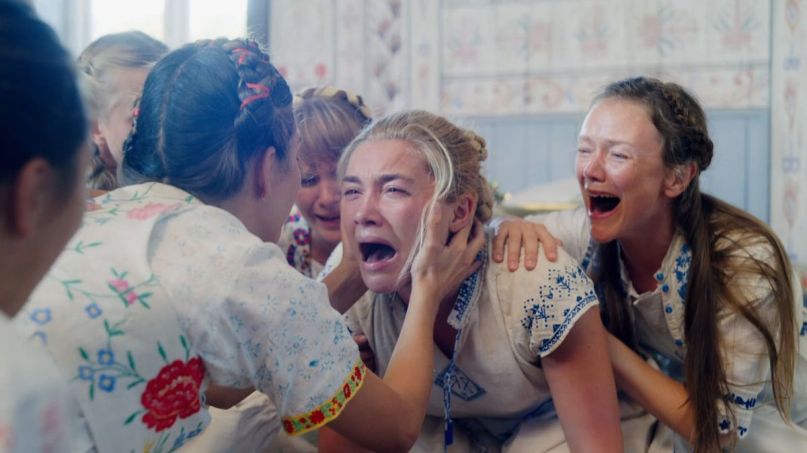
Aster admits he wrote Midsommar during a bad breakup of a longterm relationship, so he meant for the film to feel as “cataclysmic” as a committed partnership falling apart. He also mentions a love for melodrama. In this film, a relationship drama is magnified to almost mythic proportions when it concerns the ethereal yet grim reality of the cult juxtaposed with Dani’s grounded trauma.
In the aforementioned video interview, Aster says Midsommar is a “contribution to the folklore subgenre” and “was meant to be a fairy tale” but realistic enough for the audience to connect.
Fairy tales are often gruesome, though not always. Fairy tales and folktales are diverse and differ by culture and messages. Not all fairytales by the Brothers Grimm are violent; while some have similar themes, these stories were compiled through linguistic work which involved speaking to many people.
That being said, fairy tales can be dark, such as the Italian story “Sun, Moon, and Talia,” the original version of “Sleeping Beauty,” which involves rape, forced pregnancy, attempted cannibalism, and attempted immolation. The main character, Talia, marries the king who raped and impregnated her while she was unconscious. They live happily ever after, after the queen who attempted to kill her and her babies are slain.
Though the queen’s comeuppance is not outlandish, given that she attempted to kill Talia and have her children cooked into pies, in many fairy tales, the consequences largely outweigh the crimes. Cinderella’s sisters are mean to her, so birds pluck out their eyes. Fairy tales are said to have happy endings, but these endings are often esoteric; happiness for one character comes with misery, torment or brutal death for others.
In the context of the tale, the sisters being harmed is meant to be cathartic because of their past petty behavior, but do they deserve such a disproportionate punishment? The same goes for Christian. The dismissive way he treats Dani and others (and life in general, often a passive observer) is infuriating, and infidelity is a terrible and harsh blow, but he was a victim in the latter scenario, which does garner sympathy.
Even if he wasn’t nonconsenting in the fertility ritual, the elaborate and gruesome way he dies far outweighs his mistakes. It is definite and unforgiving, as dramatic as Cinderella’s sister having part of her foot cut off or a curious wife being threatened with death and chastised by the narrator for opening the door where her husband keeps his former wives’ bodies.
Dani doesn’t thrive once she gets her prince; she seemingly thrives once she lets him go as if Little Red Riding Hood would persevere if the wolf eats the lumberjack. The ending mirrors Robert Eggers’s The VVitch, where a female character, oppressed by the circumstances around her, finds release with subversive and violent forces that orchestrated the tumult.
In both Hereditary and Midsommar, a sense of helplessness permeates the characters. They are helpless in the midst of turmoil, no matter how they try to cope. Emotions are heightened often in violent or painful ways. At the core of it, Dani wants closeness she cannot get from Christian no matter how much she tries. She wants a family. Pelle says to Dani, speaking about what happened after he lost his parents:
Because I had a family—here—where everyone embraced me and swept me up and I was raised by a community that doesn’t distinguish between what is theirs and what is not theirs. That’s what you were sacrificed to. But I—have always felt . . . held. By a family. A real family. Which everyone deserves. And you deserve.
Within the cult, Dani finds compassion and empathy. When some is in pain or even experiencing pleasure, cult members tend to mimic the person experiencing the sensation. When the Ättestupa ritual occurs, where two elderly people kill themselves by falling from a long height because they have reached the peak age of seventy-two, the Hårga moan in pain when an elderly man does not succeed in killing himself but is instead terribly injured.
Most noticeably is when Dani finds Christian and Maja being intimate, and she vomits, distraught. Surrounded by the Hårga women, Dani weeps, gasps, and moans, and the women all cry with her, so she finally has others channeling how she feels and validating it through them feeling what she feels. After feeling unseen and uncared for, she and the women are united in pain and catharsis.
They are, as Aster puts it, “mirroring each other,” which may be construed as “sweet,” though insidiously, “idea of the individual is extinguished there.”
The cult is more functional than Dani’s main (and only) relationship, but she “goes from one co-dependent relationship to another.” Again, this mirrors The VVitch, where the idea of newfound freedom and exultation is pitted against a situation where the main character has been navigated into this position by the forces she now enthusiastically joins.
Unfortunately, an abuse or toxic relationship survivor going from one co-dependent relationship to another, as Aster frames the ending, is not unusual. According to the National Domestic Violence Hotline , a victim will try to leave a bad relationship seven times before succeeding. Sometimes, when they leave, it is hard to know how to have a healthy relationship while still contending with unresolved trauma and loneliness.
The idea of perpetually being in relationships that are possibly unhealthy and not knowing whether someone can be trusted to not manipulate an individual is very real anxiety in both platonic and romantic partnerships. Someone might find themselves perpetually dependent on others, which is its own horror once the agency is removed.
When questioning the extent of Dani’s liberation, the ending in the screenplay reveals many of the tensions between catharsis and co-dependency:
A SMILE breaks onto Dani’s face. She has surrendered to a joy known only by the insane. She has lost herself completely, and she is finally free. It is horrible and it is beautiful.CUT TO BLACK.
An interesting aspect entrenched in the language here pertains to the idea of loss and joy being connected. To be happy, to no longer have to apologize and show regret and doubt, Dani must lose who she has been, an unraveling.
Unlike the ending of other films that deal with trauma, Dani’s happiness does not preclude a continued sense of loss or give the audience full catharsis and comfort in her state at the end. The audience simply does not know what Dani’s state of mind will be after she finishes smiling and the ashes smolder. Her momentary contentment could be, like the ardor of youth, transitory.
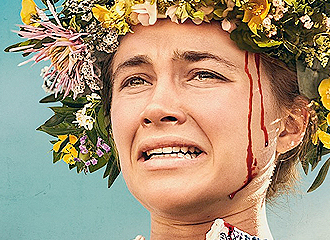 Recovery and moving on from trauma, grief, and toxic relationships are not linear processes. Healing comes with difficulties. These troubles can compound and make the road to normalcy long and arduous as the world feels distorted and surreal. Dani has entered a different world with an uncertain conclusion. Survival is bloody.
Recovery and moving on from trauma, grief, and toxic relationships are not linear processes. Healing comes with difficulties. These troubles can compound and make the road to normalcy long and arduous as the world feels distorted and surreal. Dani has entered a different world with an uncertain conclusion. Survival is bloody.
On a broader level, if one takes an authorial lens, Aster took his own trauma and made art. He took a destructive event and made it creative, building from the ruins. Midsommar, in the tradition of many lurid fairy tales, exposes these raw emotions, this rollercoaster of horror and freedom, dread and relief—horrible and beautiful.